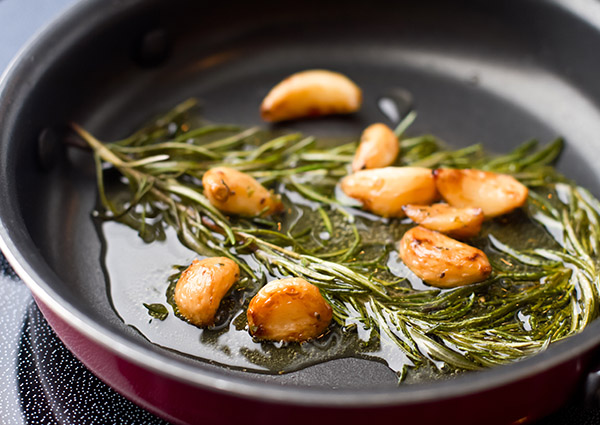
Cooking with Olive Oil
Olive oil is extracted from the fruit of olive trees and provides a good source of vitamin E and heart-healthy monounsaturated fats. It’s a multipurpose ingredient that adds excitement and sophistication to everyday meals; however, it’s easy to get confused about which varieties to choose and how they differ.
Each type of olive oil gets its unique flavor from the way it’s extracted and processed. We’ve highlighted the characteristics, flavor profiles and best uses for some of the most popular olive oils so you can choose the kind that suits your culinary needs.
Extra Virgin Olive Oil
Extra virgin olive oil is the highest grade and least processed olive oil available. This variety must meet specific criteria and chemical composition to be labeled “extra virgin.” It’s made by grinding olives into a paste and then cold-pressing to extract the oil. This production process involves no heat, which allows the oil to retain its nutrients and antioxidants and provide several health benefits, including a reduced risk of heart disease. With a distinctive fruity aroma and complex flavor, extra virgin olive oil boosts any cooking application’s taste and nutrient profile. However, it’s best in dishes where the flavor can shine, such as dressings, dips and finishing sauces.
Pure Olive Oil
Pure olive oil is considered a refined olive oil. After being extracted from the olives, it undergoes additional processing to refine any impurities. The solvents and high temperatures involved in this process alter the oil’s nutrients, color, aroma and flavor. Pure olive oils are typically blended with a small amount of extra virgin olive oil to regain some of these attributes. With a high smoke point and neutral flavor, pure olive oil is best used for everyday cooking and low-heat sautéing.
Extra Light Olive Oil
Another refined oil, extra light olive oil has a light color, aroma and flavor. This variety has a longer shelf life and contains fewer nutrients due to the high-heat methods used during processing. The mildest of all the oils, extra light has a higher smoke point than pure or extra virgin, withstanding higher temperatures before breaking down. Pale with a neutral flavor, extra light olive oil is best used in baking applications where a robust olive taste won’t be missed. It’s also ideal for high-heat cooking applications such as frying, roasting or sautéing.
Smoked Olive Oil
Smoked olive oil is a newer variety of this pantry staple. It’s produced by cold-infusing smoky flavored woods into olive oil. This process creates delightfully buttery and smoky oil without exposing it to light or heat, ensuring its nutritional attributes are kept intact. It maintains smooth, rich, olive tastes while bringing recipes to life with an elegant, smoky finish. With a slightly robust flavor, a small amount of smoked olive oil goes a long way. Add it to grilled proteins or vegetables, drizzle over fresh mozzarella or use as a dipping oil for bread.




